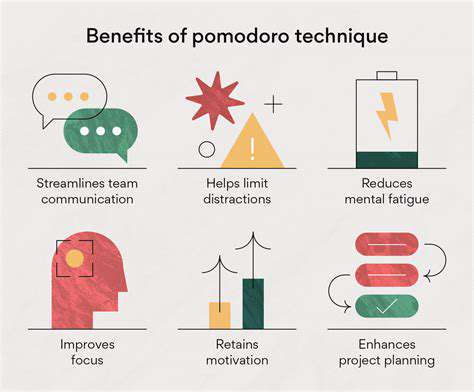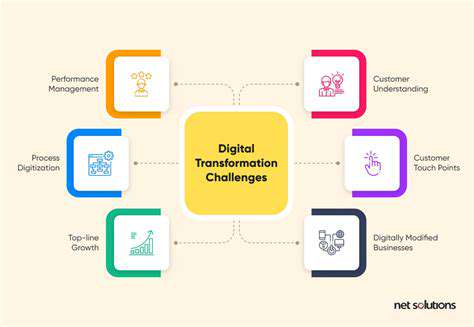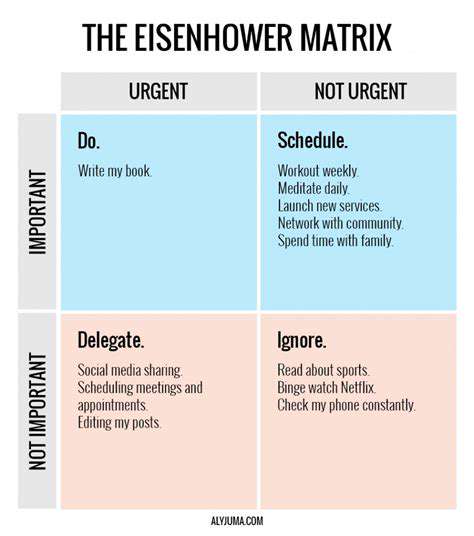Maximizing Productivity with the Pomodoro Technique: A Comprehensive Guide
What is the Pomodoro Technique?
Understanding the Basics of the Pomodoro Technique
The Pomodoro Technique is a time management method developed by Francesco Cirillo in the late 1980s. Its foundational principle is to break work into intervals, traditionally 25 minutes in length, separated by short breaks. This structured approach helps to maintain focus and improve concentration.
The name "Pomodoro" comes from the Italian word for tomato, inspired by the tomato-shaped kitchen timer that Cirillo used during his university days. The technique has gained widespread popularity for its simplicity and effectiveness, making it a go-to strategy for people looking to enhance their productivity.
A typical Pomodoro session consists of four main steps: Choose a task you want to work on, set the timer for 25 minutes, work on the task until the timer goes off, and take a short break of about 5 minutes. After completing four Pomodoros, a longer break of 15 to 30 minutes is recommended.
Implementing this technique can help individuals reduce the likelihood of burnout, as it encourages regular breaks that can refresh the mind and maintain high energy levels throughout the day.
Moreover, the Pomodoro Technique can be easily adapted for various types of work, making it a versatile tool for anyone, including students, freelancers, and professionals in all fields.
The Benefits of Using the Pomodoro Technique
One of the primary benefits of the Pomodoro Technique is its ability to enhance focus and concentration. By committing to short bursts of work, individuals can minimize distractions and increase their attention span, leading to higher quality output in less time.
Additionally, the technique promotes a healthier work-life balance. The built-in breaks not only allow for physical movement and mental relaxation but also provide opportunities for reflection on the work completed. This can help in assessing productivity and making necessary adjustments.
Another advantage is the accountability that the Pomodoro Technique instills; recording completed Pomodoros can foster a sense of accomplishment and motivation. This self-monitoring aspect encourages users to be more intentional about their work habits.
Furthermore, the technique can help in combating procrastination. By dividing tasks into manageable intervals, it becomes less daunting to start on larger projects. The promise of a short break can be a compelling motivation to begin working.
Lastly, the flexibility of the Pomodoro Technique allows individuals to tailor it to their specific needs, such as adjusting the length of work intervals and breaks based on the task's nature and personal preferences.
Tips for Effectively Implementing the Pomodoro Technique
To successfully implement the Pomodoro Technique, it’s crucial to establish a distraction-free environment. This means putting away your phone, closing unnecessary tabs on your browser, and informing those around you about your focused work time to minimize interruptions.
Choosing the right tasks to work on can also significantly impact your productivity. Prioritize your tasks before starting a Pomodoro session, so you can work on high-impact activities during your focused periods.
Having the right tools can make the Pomodoro Technique more effective. While a simple timer can suffice, there are numerous apps available that offer Pomodoro tracking features, allowing you to log your intervals and breaks easily.
Another essential tip is to be consistent with the technique. Incorporating Pomodoro sessions into your daily routine at the same time can help to automate the behavior, making it easier to stick to it and build momentum.
Lastly, don't hesitate to modify the technique to suit your personal workflow. Whether it's experimenting with the duration of the Pomodoros or adjusting break lengths, find what works best for you to maximize your productivity.
Benefits of the Pomodoro Technique

Improved Focus and Concentration
The Pomodoro Technique encourages individuals to work in short, intense bursts followed by short breaks. This approach helps to build sustained focus, as each work session is limited to just 25 minutes, minimizing distractions and enhancing concentration.
By creating a structured environment, users find it easier to dive into their tasks without the overwhelming feeling of a long workday. This method also allows for regular mental resets during the breaks, further sharpening focus for subsequent bursts.
Enhanced Time Management Skills
Using the Pomodoro Technique promotes better time management by breaking tasks into manageable intervals. This structured framework can help users estimate how many Pomodoros a task might take, allowing for better planning of their day.
When individuals track the number of sessions completed for various tasks, they can identify patterns and make adjustments to their schedules. Ultimately, this leads to increased efficiency and an improved understanding of personal productivity levels.
Reduced Burnout and Stress
The regular breaks incorporated into the Pomodoro Technique provide essential downtime for the brain, which can significantly reduce feelings of burnout and exhaustion. These short intervals allow individuals to step away from their work, rejuvenating their minds for the next intensive period.
Moreover, by keeping sessions short and varied, users can engage in multiple tasks without the pressure of working long hours continuously. This method encourages a healthier work-life balance, ultimately fostering a less stressful environment.
Increased Motivation and Accountability
The Pomodoro Technique fosters motivation by instilling a sense of achievement with each completed session. As individuals check off their completed Pomodoros, they experience a tangible sense of progress, which can be incredibly motivating.
Accountability is another beneficial aspect of this technique. By potentially working with a partner or using tracking tools, users can share their accomplishments, creating an environment of support and motivation throughout their productivity journey.
Fostering Better Work Habits
Utilizing the Pomodoro Technique helps to cultivate positive work habits as it encourages discipline and consistency. As individuals become accustomed to the structured intervals, they learn how to better allocate their time and energy to tasks, leading to improved work ethic.
Over time, this technique can help ingrained habits of regular breaks and focused work, making productivity a natural part of one’s work routine. Ultimately, this structured approach can lead to long-lasting changes in how one approaches their daily responsibilities.
How to Implement the Pomodoro Technique

Understanding the Basics of the Pomodoro Technique
The Pomodoro Technique is a time management method developed by Francesco Cirillo in the late 1980s. It encourages individuals to work in focused bursts of activity, followed by short breaks. This framework is designed to boost productivity by preventing burnout and sustaining attention over longer periods.
Typically, the technique involves working for a specific period, known as a "Pomodoro," which is usually set for 25 minutes. After completing the Pomodoro, you take a short break of about 5 minutes before starting another work session. This cycle helps to maintain motivation and enhances overall efficiency.
Steps to Get Started with the Pomodoro Technique
To implement the Pomodoro Technique, begin by selecting a task you want to work on. Make sure to eliminate distractions and set a timer for 25 minutes. During this time, focus solely on the task at hand, ensuring that you dive deep and make significant progress.
Once the timer rings, take a 5-minute break. Use this time to stand up, stretch, or grab a quick snack. After completing four Pomodoros, take a longer break of 15-30 minutes. This practice not only refreshes your mind but also rejuvenates your body for the next cycle of productivity.
Tips for Maximizing the Pomodoro Technique
Setting Up Your Pomodoro Environment
To get the most out of the Pomodoro Technique, it’s crucial to create a conducive work environment. Start by minimizing distractions; this can include silencing notifications on your phone and computer. Consider using apps that block distracting sites during your work sessions.
Having a comfortable workspace is equally important. Make sure your chair and desk are ergonomically friendly, and that you have good lighting. If possible, organize your workspace to have all necessary materials within reach, which also helps in reducing downtime during each Pomodoro.
In addition to physical comfort, psychological comfort plays a role too. Surround yourself with things that inspire you or bring you joy. Whether it’s a plant, a photo, or even calming colors on your walls, a pleasant environment can significantly boost your focus and motivation while working.
Another useful tip is to clearly define your goals before you start your Pomodoros. Having specific tasks in mind can help reduce indecision and keep your mind focused on the task at hand, making your work sessions more effective.
Adjusting the Pomodoro Technique for Personal Preferences
While the traditional Pomodoro Technique suggests working in 25-minute increments followed by a 5-minute break, feel free to adjust these durations to better suit your personal work style. Some people find a longer work session of 45 minutes followed by a 10-minute break works better for them, especially for tasks requiring deep focus.
It’s also important to take into account your energy levels throughout the day. Some individuals are more productive in the mornings, while others find their peak hours later in the day. Identifying when you work best can help you better structure your Pomodoros around your natural rhythms.
Experiment with different lengths of sessions and breaks. You might find that a 15-minute break after a 30-minute work session helps you recharge more effectively than the standard 5-minute pause. Keep track of your productivity to discover what combination works best for you.
Lastly, don’t forget to incorporate longer breaks into your schedule. After completing four Pomodoros, take a longer break of 15-30 minutes. Use this time to step away from your desk, hydrate, and refresh your mind, which can ultimately sustain your productivity levels throughout the day.











